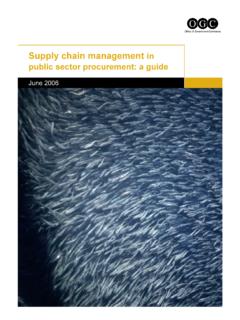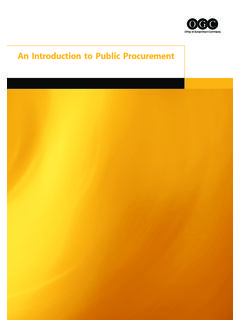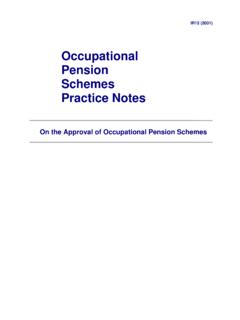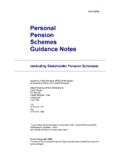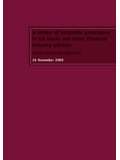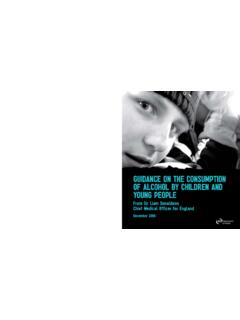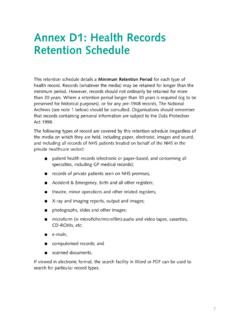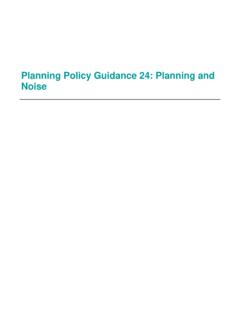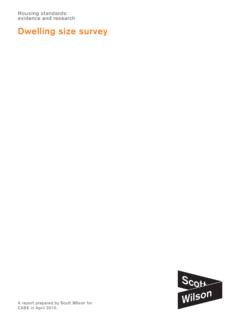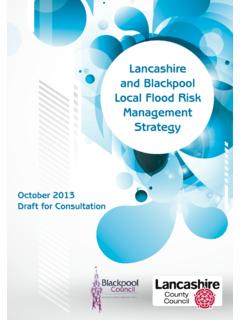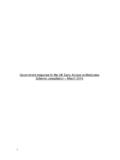Transcription of Tackling internal fraud - UK Government Web Archive
1 Tackling internal FraudJanuary 2011 Tackling internal FraudJanuary 2011 Official versions of this document are printed on 100% recycled paper. When you have finished with it please recycle it using an electronic version of the document, please consider the environment and only print the pages which you need and recycle them when you have finished. Crown copyright 2011 You may re-use this information (not including logos) free of charge in any format or medium, under the terms of the Open Government Licence. To view this licence, visit or write to the Information Policy Team, The National Archives, Kew, London TW9 4DU, or e-mail: 978-1-84532-823-8 PU1115 1 Contents Page Foreword 3 Chapter 1 Introduction 5 Chapter 2 Understanding and Measuring fraud Risks 7 Chapter 3 Creating and Maintaining the Right Structures and Culture to Combat fraud 9 Chapter 4 Dealing with fraud Risk 13 Chapter 5 Deriving Assurance over the fraud -risk Strategy 19 Annex A Related Legislation 21 Annex B Anti- fraud Policy Example 23 Annex C fraud Response Plan Guidance 27 Annex D fraud Indicators 29 Annex E Risks and Controls in Specific Systems 31 Annex F Money Laundering 37 3 Foreword A recent estimate by the National fraud Authority puts annual losses in the public sector due to fraud at around 25 billion.
2 At a time when Government departments have to make significant cuts in spending, this level of loss is unsustainable and every effort should be made to cut fraud losses significantly. A big challenge for departments during a period of significant reform and fiscal consolidation is to ensure that any major business change is delivered within a viable risk management and control framework. fraud risk is always an important issue but in a period of considerable financial pressure the risk of fraud may increase for a number of reasons including: Job losses and the fear of redundancy can lead people to commit fraud ; People are more likely to disregard internal control or engage in unethical business practices; Economic pressures may have a direct effect on people s ability to rationalise fraudulent actions; Staff reductions may mean fewer resources being spent on internal controls; Risk, compliance and assurance systems can be impacted by diminished investment; and Revised or new programmes may not have taken account of the risk of fraud .
3 This guide has been produced to help Government bodies to meet these challenges. It covers the general principles of sound fraud risk management offering good practice advice to those with little or no knowledge of the subject. Although the emphasis of the guide is on the prevention and detection of internally generated fraud , many of the principles apply equally to reducing the risk of fraud by users of Government services. We are grateful for the help of a number of central Government bodies and other organisations, especially the National fraud Authority, in producing this guide. Chris Wobschall Head, Assurance and Financial Reporting Policy Head of the Government internal Audit Profession HM Treasury 5 1 Introduction Departmental responsibilities in relation to the management of fraud risk are outlined in Annex of Managing Public Money1. The purpose of this booklet is to expand on that advice and to show how the principles of sound risk management, governance and internal control apply to managing the risk of fraud and other irregular activities that might lead to fraud .
4 This guide provides general guidelines for managers and operational staff seeking to reduce the risk of fraud in an organisation. It provides guidance that can be applied to many aspects of Government business including contracting, procurement, payroll, cash handling, grant payments and the management of assets and information. These principles apply equally to the management of fraud risk in the payment of benefits and collection of revenue for which there is specific guidance in the HM Treasury and NAO guide Tackling external fraud 2. The term fraud is commonly used to describe a wide variety of dishonest behaviours such as deception, bribery, corruption, forgery, false representation, collusion and concealment of material facts. It is usually used to describe the act of depriving a person of something by deceit, which may involve the misuse of funds or other resources, or the supply of false information. See also Annex A which covers some fraud -related legislation.
5 fraud is just one of many risks an organisation faces. However, the deliberate nature of fraud can make it difficult to detect. fraud risk is the vulnerability or exposure an organisation has towards fraud and irregularity. It combines the probability of fraud occurring and the consequent impact measured in monetary terms. There are generally three main factors that can induce people to perpetrate a fraud : The reward from the fraud is perceived to outweigh the risk; The individual may rationalise of the act on the grounds of a personal grievance or set of circumstances ; and The opportunity to carry out the fraud presents itself or the likelihood of detection is perceived as unlikely. While some people would never contemplate perpetrating a fraud , others might be tempted if they thought they could avoid detection, particularly at a time when some might consider that the risk of detection is reducing. An organisation requires the ability to prevent, detect, and investigate fraud and pursue sanctions to deter potential fraudsters.
6 The removal of the opportunity is generally the simplest action for managers trying to minimise the risk of fraud . Opportunities to commit fraud may be reduced by ensuring that a sound system of control, proportionate to risk, has been established and that it is functioning as intended. In times of fiscal hardship, where pay and rewards are constrained, staff with a personal grievance may feel more inclined to justify irregular actions. Communications campaigns are 1 2 6 examples of trying to set a positive cultural environment. A clear lead from top management on the ethical standards expected of staff and the creation of a positive work environment can significantly reduce the likelihood of fraud being rationalised. The risk of fraud is ever present but in times of austerity there may be more need to direct resources at this risk. The risk of fraud can increase for a number of reasons including: Economic pressures have a direct effect on people s perceived economic circumstances and could increase the likelihood that they engage in fraudulent activity; Staff reductions may result in fewer internal controls such as separation of duties, approval processes, supervision and rotation of staff; Risk and compliance systems can be impacted by diminished investment; Revised or new programmes may not have taken sufficient account of the risk of fraud .
7 In broad terms managing the risk of fraud involves: Understanding and measuring fraud risks (Chapter 2); Creating and maintaining the right structures and culture to combat fraud (Chapter 3); Dealing with fraud risk (Chapter 4); and Delivering assurance over the fraud -risk strategy (Chapter 5). 7 2 Understanding and Measuring fraud Risks Introduction The potential for fraud can be considered as a set of risks to be managed alongside other risks. Preventive controls and the creation of the right type of corporate culture will help to reduce the likelihood of fraud occurring while detective controls and effective contingency planning can reduce the size of any losses. A risk-based approach enables organisations to target their resources more efficiently. Before designing expensive controls to reduce the risk of fraud , it is important to know the extent to which an organisation is vulnerable to fraud . This involves: Assessing the organisation s overall vulnerability to fraud which should be considered as part of an overall risk assessment; Identifying the areas most vulnerable to fraud risk; and Evaluating the scale of fraud risk.
8 Assessing the Organisation s Overall Vulnerability to fraud fraud risks are often considered as part of an organisation-wide risk assessment programme although they may be addressed separately. The extent to which an organisation carries out a fraud -risk assessment will depend on the size and complexity of the organisation and nature of its activities. Where there are complex delivery arrangements, or organisations are dependent upon delivery partners or Arms Length Bodies, it may be appropriate to gauge the level of fraud risk in those bodies and seek commensurate assurances. Identifying the Areas Most Vulnerable to fraud A high-level consideration of fraud risk will determine whether there are areas that are vulnerable to fraud and will help to decide if there is a need to perform a more detailed fraud -risk assessment. It will not be cost effective to cover every possible threat situation therefore the likely occurrence of fraud and the impact on key organisational objectives must be assessed.
9 This stage involves: Identifying the processes or activities at risk of fraud ( through commissioning a risk review, undertaking risk self-assessments, issuing questionnaires, benchmarking/ comparisons with other organisations). Assessing and ranking the nature and extent of vulnerability in each area. Some common criteria/factors used to make judgements about vulnerability include: Overall size, scope and value of activities, as well as the nature, security and value of assets held; 8 Adequacy of operational controls ( separation of duties, supervision, approval, staff rotation) including appropriate skills/knowledge of supervisory staff; The particular forms of fraud threat to each area ( theft, fraudulent administration of contracts, falsification of source records such as timesheets); Extent of effective reporting mechanisms and the ability to stop frauds occurring quickly; Degree of operational complexity and impact of technology; The quality, reliability and adequacy of staffing arrangements including recruitment processes; and Adverse motivational factors that could induce staff to commit fraud .
10 Evaluating the Scale of fraud Risk In deciding how to address the fraud risks identified, it is important to evaluate their significance. Risk evaluation and assessment will inform decisions about the areas of risk and the relative priority of those risks where action needs to be taken. Once risks have been identified, an assessment of the possible impact and corresponding likelihood of occurrence should be made using consistent parameters that will enable the development of a prioritised risk analysis. The risk assessment should consider the financial impact, the potential political and commercial sensitivities involved and the likely effect on the organisation s reputation. The analysis should be both qualitative and quantitative. The qualitative approach usually involves grading risks in high, medium or low categories. 9 3 Creating and Maintaining the Right Structures and Culture to Combat fraud Introduction All Government departments and agencies have a responsibility to develop anti- fraud policies to show those seeking to defraud the Government that such action is unacceptable and will not be tolerated.
